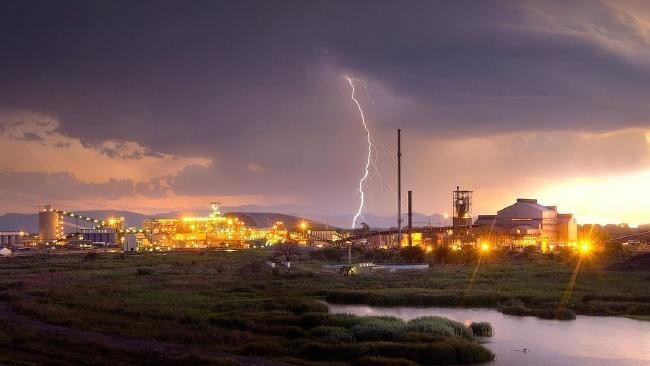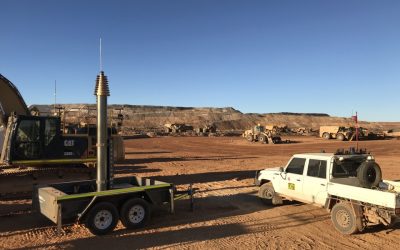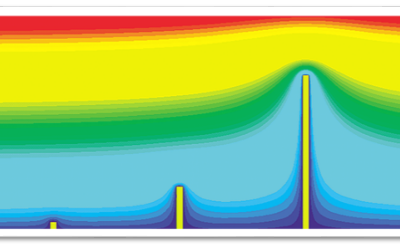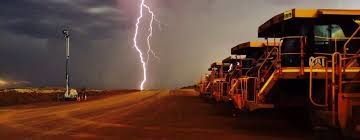If you have not yet considered your organizations preparations to the upcoming 2020/21 lightning season, then time is running out to undertake the normal and required annual maintenance checks and housekeeping, for ensuring the safety of outdoor personnel.
Portable Lightning Detection Equipment
Too often we are canvassed by users who complain of continuous false alarming, or failure to detect, only to discover their detection technology has not been correctly set up, or the batteries have become depleted, or the equipment is not suitable for use in the application in which it is being used, which is especially relevant in high noise environments.
So this equipment:
- Should never be operated in close proximity to any electrical noise sources.
- Should not be located near PC’s, Radio transmitters, or normal office equipment.
- Will False Alarm if used in close proximity with cell phones.
Remember that portable lightning detectors are Class 4 devices (refer IEC62793) and will only detect Cloud to Ground Lightning strikes.
Portable lightning detectors cannot alert to cloud to cloud or intra cloud lightning flashes that can precede cloud to ground strikes, where your Safe Working Procedure must allude to these shortcomings whenever reliant upon limited capability Class 4 detection equipment.
Additionally, specific detectors have their own particular nuance that may require some specific checks.
For example;
Thunderbolt Lightningman Detector

- When was the last time you checked the correct function of the detector.
- When was the last time your checked / replaced the rechargeable batteries.
- When was the last time you checked the distance metrics settings that the detector is set to alert to.
- When was the last time you conducted a background noise test back to factory spec.
- Do you have the correct charger, and is it correctly labelled for the equipment.
Thunderbolt Lightningman operates as a ‘delayed response detector’ meaning it will sometimes remain silent even during active thunderstorms, until such time as it has obtained sufficient storm data to compare previous strikes with subsequent strikes, which it analyses and compares the storm data so as to determine whether there has been an approach towards the users location.
If so it will then report the closest ground strike, speed of approach, estimated time of arrival, estimated time to clear, and if the data suggests the storm is on a non intercepting transect, it will display “No Approach Detected’.
This equipment is powered by a Rechargeable Nickel Metal Hydride (NiMh) battery and should never be fitted with a Lithium rechargeable battery.
Skyscan EWS Pro

- When was the last time you checked the correct function of the detector.
- When was the last time you checked / replaced the sealed lead acid rechargeable batteries.
- When was the last time you checked the distance metrics settings that the detector is set to alert to.
- Do you have the correct charger and is it labelled for the equipment.
Skyscan EWS Pro2 operates as an ‘instantaneous response detector’ meaning it will range and alert to each and every cloud to ground strike in real time via its 105dB horn and high visibility color coded LEDs.
This equipment does not include any internal comparison of storm data that would alert to any storm movement towards the users location. If the unit alarms then TARP should commence irrespective if the storm is not likely to be approaching the users location
Safe Working Procedure
It is vital that users of lightning detection equipment only do so in conjunction with a well considered Safe Working Procedure (SWP) that ensures that all workgroups have the opportunity to receive lightning alerts.
Too often we see that even the highest risk workgroups are precluded from receiving any such lightning alerts whilst in their undertaking of normal higher risk activities.
There may also be some workgroups who may require additional time to make safe any unsafe work and /or seek a safe shelter earlier than other workgroups, in which case they may need to adjust their detection equipment settings and procedural trigger action point to seek shelter much earlier than some other work groups

Remember there are some common workplace areas that will have a higher disposition to lightning strikes inc. railway lines, pipelines, metallic fences, communications towers, large plant, area lighting columns where the surrounding ground is subjected to earth potential rise where the local soil can become highly electrified over large areas.
The highest number of lightning related workplace injuries will be attributed to these step and touch potential hazards associated with the indirect mechanism of the earth potential rise.
This housekeeping needs to happen now, and before the season starts!
Keep safe out there!
Grant Kirkby – Lightningman





